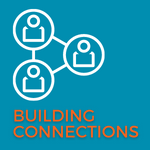When community stakeholders work together on transformative workforce development, it eliminates duplication of effort, leverages the work of experts and closes gaps in service for jobseekers. Collaboration is the only way to effectively drive system-wide change and answer fast-emerging labour needs.
And the widespread economic and employment upheaval caused by the pandemic makes cohesion even more critical.
At Mohawk College in Hamilton, ON, we’ve committed to working with career development practitioners and other partners in the workforce and social services ecosystem on a demand-led, strategic approach to poverty reduction, labour shortages and post-pandemic recovery that is now serving as a model for other communities.
Career development practitioners and employment counsellors are key pillars of an ecosystem that fosters viable employment training pathways and addresses barriers to labour-market participation. The front-line champions of those seeking educational and employment opportunities provide critical expertise and insights that underpin impactful local solutions.
What is Challenge 2025?
Mohawk College’s Challenge 2025 (C2025) is a collaborative, multi-sector community initiative tackling labour shortages and helping traditionally marginalized people access education that leads to meaningful employment.
C2025 aims to accelerate, amplify and scale the impact and success of City School by Mohawk, which offers fully subsidized college courses and skills programs to those who might not have seen a path to post-secondary education for themselves before.
C2025 participants are developing the employment and technical skills needed to succeed in a variety of in-demand sectors, including food and beverage processing, goods movement and transportation, advanced manufacturing and health care.

Clients of Goodwill, The Amity Group are overcoming barriers to employment thanks to rapid skills training through SkillsAdvance Ontario and Mohawk College, says Program Manager Jahmoyia Smith.
“Our partnership with Mohawk College City School helps to provide our clients with the knowledge and connection required to become sector-ready employees and work successfully in the field of food and beverage manufacturing. These opportunities positively impact personal, social development as well as community growth.”
Since its launch in 2015, City School has grown exponentially. Programming is now offered at three community locations, two mobile classrooms, as well as numerous pop-up sites, including on-site at employer partners and through virtual delivery.
The model has now been applied to rapid skills training projects in a number of targeted sectors.
Building an ecosystem
Mohawk College has established a leadership role in mobilizing connections between career development practitioners, social assistance providers, local employers and governments that support a journey to employment for those receiving social assistance (income benefits) in the Hamilton area.
City School participants often have limited job experience, long absences from the workforce and/or no or very limited post-secondary education. Many face obstacles, including housing instability, lack of childcare and the interconnected stresses of living in poverty.
The contribution of career development practitioners is key to ensuring wraparound supports are in place to address the challenges that could otherwise derail a participant from finishing their training or education. And those working with specific populations – women, newcomers to Canada, and those in second-career training, for instance – best understand the supports needed by those groups.
‘Whole-of-community approach’
In 2019, the College launched its wide-ranging C2025 initiative. A major success of that was the June 2020 announcement that City School by Mohawk received $1.95 million from the Future Skills Centre to launch a new national industry training program, the Material Handling 4.0 pilot (MH 4.0), which aims to support jobseekers to train for entry-level supply chain and logistics careers.
The MH 4.0 project has now been rolled out in partnership with other colleges in Vancouver, Winnipeg and Halifax. This is such an exciting time because we know this approach works and we want to see that success benefit other communities.
A key partner in our C2025 initiative is the City of Hamilton’s Healthy and Safe Communities Department. Grace Mater, acting general manager, says City School and C2025 help individuals on social assistance achieve greater independence and employability.
“The collaborative, whole-of-community approach to workforce planning at the centre of the C2025 initiative ensures that together we are more effective in supporting individuals in our community who rely on social assistance programs by providing appropriate skill training and opportunities that are also responsive to the skills being sought by local employers in Hamilton,” Mater says.
What advice can we share?
Your work as career development specialists gives you the expertise and the perspective to be the catalyst that brings a collaborative reality to life in your own communities. City School proves that providing access to education to equity-seeking groups is game-changing at the individual, family, neighbourhood and city levels.
We’ve learned plenty of lessons along the way, but let’s boil the process down to these broad steps:
Step 1: Build on your existing network. Identify your community partners, including a training provider such as a community college, municipal social assistance providers and not-for-profit social services agencies providing employment services and other key wrap-around supports, local employers (especially those from sectors in transition), community labour organizations, municipal economic development representatives, and provincial and federal government funders.
Step 2: Establish a working group to explore existing realities and gaps in the ecosystem, build conversations around potential opportunities to address labour shortages in key sectors and find funding sources, whether that’s community foundations, government or philanthropic.
Step 3: Start with a small pilot project, bringing together an employer, the training institution and your career development agency to build programming geared at getting unemployed and underemployed people trained for specific jobs in priority areas for your community.
Step 4: Collect data and metrics from the pilot to test and adapt the model and then find the next employer and sector to target. Identify and monitor participant needs and barriers to bring to the working group for broader discussion and advocacy.
Step 5: Throughout the process, be flexible, willing to experiment and open to change.
We hope our example serves as an inspiration. There is no simple, one-size-fits-all model to tackle poverty, unemployment and pressing labour shortages. But rest assured, this work is important, rewarding and transformational.




